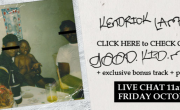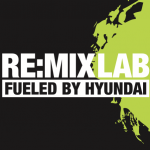How do I listen to music on demand? Let me count the ways…
Playback outlets are abound and at the public’s disposal but are there an equal number of ways to keep tabs on much music being played to make sure everyone who should be is being properly compensated? There are the timeless performing right organizations and their accompanying monitoring/reporting/collecting procedures, but is that enough? Dollars go unclaimed everyday. Some industry companies have stepped out of the box to try and remedy this problem: Big Machine/Clear Channel and SoundExchange/BandPage are two prominent examples in recent memory.
Even so, more advocates for musicians is never a bad thing, and that’s exactly what TuneSat is striving to be in the face of an ever-expanding music scene.
SoundCtrl was first introduced to TuneSat during a demo for a NY Music Tech Meetup back in February. An independent audio monitoring service, not a PRO, TuneSat employs the unique method of Audio Fingerprinting, using master recordings of copy written material, for tracking subscribers’ works both online and on TV, to help mitigate the problem of lost compensation for unreported, unlicensed music usage. TuneSat also provides valuable resources to arm musicians with the knowledge and proof they need to face cases of infringement.
Chris Woods, the Executive Vice President and Chief Operating Officer of TuneSat, chatted with me, explaining the nuts of bolts of what the company does for its clients and how these methods can be of real help against an infringement-rampant society.
SoundCtrl: When I first read the call-to-action for TuneSat, “Audio Fingerprinting” definitely caught my attention. For those not so ingrained in the industry, can you give a breakdown of what your role is with the company and what makes TuneSat’s method so effective in finding recordings?
Chris Woods: Well, I’m both the COO and a co-founder of TuneSat. Prior to launching the service and launching the company, I met co-founder Scott Schreer in the early 2000s. He’s been writing music for television for quite some time and has got some pretty big claims to fame. He wrote the “NFL on Fox” theme. I think between the two of us we have over 10,000 copyrights that we’ve created and either sold or published for TV broadcast.
As a composer, you get paid to create a work for hire that you would sell, or you license a piece of music for others to use or broadcast. After that, each time a work is performed on television and reported to the PROs, there’s a corresponding royalty payment given to the composer and publisher of that copyright. The problem is, that it’s relying on a manual reporting process and it creates a highly ineffective system that results in massive amounts of inaccurate reports, resulting in inaccurate royalty distribution. Copyright holders are definitely leaving money on the table. We decided to address that issue through technology.
In 2006, we decided to build our own technology. We needed a technology that could specifically identify music being played on TV, even when it was being buried under layers and layers of audio –like crowd noise, sound effects, etc. almost to the point where it’s imperceptible. So we needed a really forensic audio fingerprint technology and that’s what we built.
So in 2009, we launched the subscription based service. At the time it was monitoring about 110 national network broadcasters in the U.S. and since then we’ve gone on to expand our monitoring operations to 14 countries all throughout western Europe and the U.S. In exchange for a monthly fee, rights holders can get near real-time performance data; giving you the whole duration that your music played, the channel of the show, the episode, the date and time down to the second the music started playing, as well as an mp3 recording of the captured broadcast, as proof positive of the use. During that time, we conducted a lot of case studies – both with our catalogs and other catalogs of people that we work with to compare detection data against royalty statements, to understand how big the discrepancy actually is, and we found that as much as 80% of music broadcast on TV is never reported, resulting in this majorly inaccurate royalty distribution based on faulty data. That’s why we built TuneSat. We really knew we had a strong business case to answer a severe problem in the music industry.
SoundCtrl: When it comes to confronting a misused recording, what’s the breakdown for communication and action for third party hosting outlets like YouTube, (that has its own massive army for file removal), as opposed to an individual site owner that has a file playing in the background while you visit their page? What about the many TV broadcasters TuneSat monitors?
Woods: With this new part of our service, we crawl the internet looking for multimedia files like Flash Video, Quicktime movies, mp3 files, WAV files, you name it –any multimedia codec we’re looking for on publicly available websites, and those websites can be Microsoft.com, it could be YouTube.com, a hotel in Nebraska, a restaurant in Florida –it could be anything. What we’re doing is crawling the web looking for those files and then passing them through our system –similar to how we pass things through for TV broadcasts, looking for matches against our fingerprint database. Our concept around web and music used on there, is to help our clients find monetizable uses of their music.
We’re not as focused on or concerned with a P2P type of thing. It’s literally virtual ‘whack-a-mole.’ You whack down a misused file in one locker and it goes to another BitTorrent place. What we’ve focused on more are businesses. Corporations, products, services, looking for people that are using music in an unlicensed way that are benefiting from it in some way. When we find those uses, we’re going out on behalf of our clients and issuing retroactive licenses to those people. Maybe they didn’t even know they needed a license or maybe they thought they were covered under something else. We’re able to create new streams of revenue for our clients and occasionally create new clients as well because people want to continue using music with the proper licensing.
SoundCtrl: With mobile tech being one of the top ways people access their email, web, and music needs, where does TuneSat fit into the picture for the many less-well-known apps that host and provide music for users to listen to? Can these apps be monitored as part of the web services provided?
Woods: I wouldn’t say scanning mobile applications in that regard. I’m not going to say it’s impossible but it’s not something we’ve been able to crack just yet. You know, looking for music used within a mobile application that could be potentially unlicensed, maybe that’s something we can do in the future. Leaning towards that, we find that online video games are one example all the time that are using music in an unlicensed manner. Over time I think we’ll be able to move more and more into that area and provide a further level of protection for our clients.
SoundCtrl: Do you think TuneSat’s reliance on master recordings for identification puts some kind of stigma on music trends like remixing or mashups, which are both common (and often widely accepted/embraced) by both the public and bands on the internet? For example, many blogs were identifying and reporting on the individual who mashed up Psy’s “Gangnam Style” with Carly Rae Jepsen’s “Call Me Maybe,” as an unspoken but also expected, entity.
Woods: Yeah, that’s really a business decision that’s up to the rights owners at the end of the day. I’m sure each and every one of them has a different viewpoint on mashups and remixes and things of that nature; what to them is acceptable and what’s not. The bottom line is that we’ll provide them the information as to what’s being mashed up and where it is. Then it’s up to them to decide if it’s actually something they think is really cool. You know, then it turns into business intelligence for them. Like, “Oh, I didn’t even know that mashup existed, I didn’t even know we had that mention on this blog. That’s actually really cool and I’d like to be able to run with that with our marketing department.”
Or it could be something like “Wait a minute, that mashup is now being sold on iTunes. That’s my master recording. I definitely have a claim I’d like to pursue.” TuneSat’s opinion doesn’t matter in that regard, because we don’t have one. We can tell you exactly where your music is and how it’s used, but it’s up to you to decide how you want to deal with that.
SoundCtrl: Given that TuneSat also helps musicians to ‘double check’ their PROs cue sheets for missing uses, (and their subsequent due payments), are there future plans for a more official connection with any of the PROs and possibly tighten up the reporting process?
Woods: Absolutely. SESAC has been one of our clients for a couple of years now. They use the data every day to make sure they’re paying their affiliate members accurately. We’ve been in discussion with none of the other, larger PROs. I think the thing to think about with the larger PROs is that they’re behemoth companies and have had a certain infrastructure setup for decades and it’s been working for them. It’s more difficult for the larger companies to change and adopt new technologies and implement them. For smaller companies, it’s just like anything else. So I don’t think that [other PROs] don’t want to, I think it just takes a lot of time for them to understand how they can implement it and how they can do it in a way that isn’t completely disruptive. It takes time.
Teaming up with the PROs is really part of the mission Scott and I originally set out to accomplish at the whole beginning of this. We wanted to create a more transparent, accountable system for all rights holders. To get PROs on board and implementing these changes that benefit their affiliate members, we’ll feel like we actually accomplished something. Technology in the PRO work is kind of a necessity. As ad dollars shift – because that’s really where the money comes from at the end of the day – we’re growing into more of a micro transaction world rather than a blanket license world. The only way to keep up with that is technology. So I think it’s not a question of “if.” It’s a question of “when.”
SoundCtrl: So I have to ask, and pardon if I’m digging a bit too far into what might be TuneSat’s valuable secrets, but how do you do it? To have such a breadth of web and TV recording observation across the globe… obviously there’s a lot of tech involved, but is there a lot of human power behind it to match?
Woods: Not really, we have a pretty small team. TuneSat’s about 15 people right now. We have an office here in New York, we have an office in Germany and we have two data centers in New York and Paris. We obtain the TV stations to be monitored through satellite feeds as a business subscriber to those channels, and we do the same here in New York. Expansion is easy and it’s cost-effective. Pretty much everyone that works here is either a musician, a composer, or has been in the music industry. We’re all passionate about what we do. We’re passionate about technology and we really want to help create change in the industry where people can get paid properly.
Kira is an old school music nerd with a love for all things creative; always searching for music’s common ground. She graduated with an M.A. in Performing Arts Administration from New York University. Drop her a tweet @shadowmelody1

















Comments are closed.